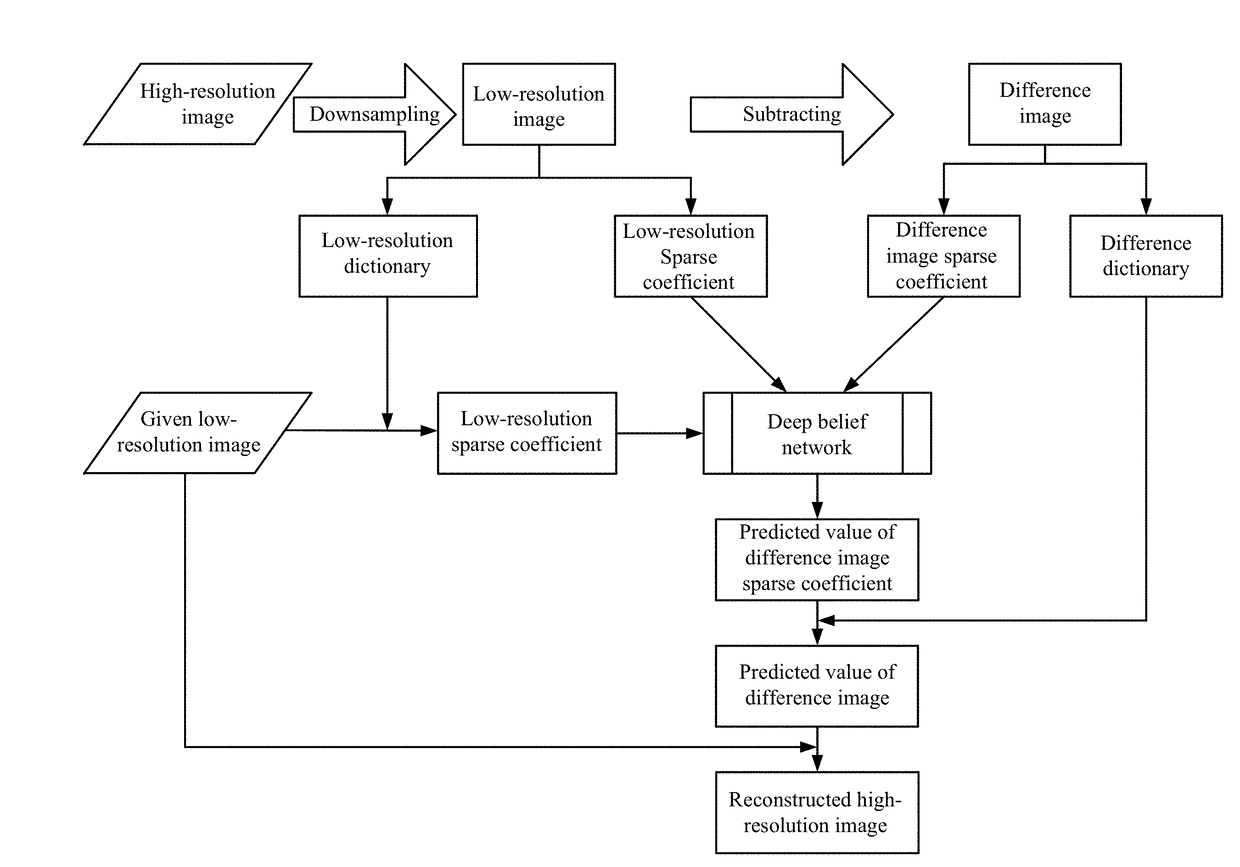Method and system for reconstructing super-resolution image
a super-resolution, image technology, applied in image enhancement, instruments, editing/combining figures or texts, etc., can solve the problem that the reconstruction result may not be unique, and achieve the effect of high image super-resolution reconstruction precision and high precision
- Summary
- Abstract
- Description
- Claims
- Application Information
AI Technical Summary
Benefits of technology
Problems solved by technology
Method used
Image
Examples
Embodiment Construction
[0039]The present disclosure will be further described below in combination with the drawings and the embodiments.
[0040]The embodiment of the present disclosure relates to the super-resolution reconstruction of a remote sensing image. As shown in FIGS. 1-6, the embodiment of the present disclosure comprises the following concrete steps:
[0041]a: Generating Data
[0042]In the present disclosure, firstly, a high-resolution image in a training sample library is cut into N d×d image blocks; the resolution of each image block is reduced to obtain N corresponding low-resolution image blocks; then column vectors formed by stretching the high-resolution image blocks compose a matrix yl ∈ Rd2×N (indicating that, yh is a real matrix of d2×N), and a corresponding matrix yl ∈ Rd2×N of the low-resolution image is obtained in the same manner; and the difference portion yhl=yh−yl of two matrixes is obtained through computation.
[0043]b: Dictionary Training and Corresponding Sparse Representation Coeff...
PUM
 Login to View More
Login to View More Abstract
Description
Claims
Application Information
 Login to View More
Login to View More - R&D
- Intellectual Property
- Life Sciences
- Materials
- Tech Scout
- Unparalleled Data Quality
- Higher Quality Content
- 60% Fewer Hallucinations
Browse by: Latest US Patents, China's latest patents, Technical Efficacy Thesaurus, Application Domain, Technology Topic, Popular Technical Reports.
© 2025 PatSnap. All rights reserved.Legal|Privacy policy|Modern Slavery Act Transparency Statement|Sitemap|About US| Contact US: help@patsnap.com



